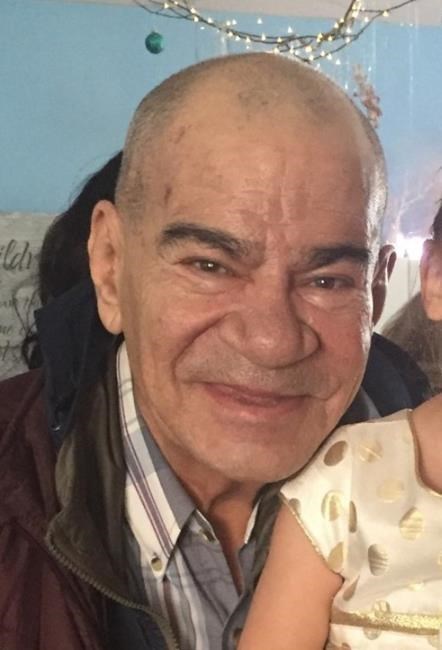REGINA — Allan Landrie died alone on the floor of a locked hospital washroom that nobody opened for more than three days.
The ailing 72-year-old, who had an unexplained illness on top of other medical issues, killed himself a year ago in Room 1763 in the old wing of Saskatoon's Royal University Hospital.
"Sorry for all the trouble I've caused you but I just can't take the pain anymore," he texted a sister at about 1:30 p.m., Sept. 28, 2019, the day he disappeared.
He was reported missing a few hours later.
Despite a police investigation, which traced his cellphone to the hospital, Landrie wasn't found until the evening of Oct.1, 2019, when a member of the cleaning staff asked security to open a locked bathroom door and discovered his body.
More than 72 hours had passed.
“That’s the hardest part for me," says his youngest daughter, Tammi Bryan, in a phone interview from Kelowna, B.C.
"When I go to bed at night, that’s all I picture."
Bryan says the family is disappointed the investigating coroner decided against ordering an inquest into her father's death. She says one is necessary because of how long it took before Landrie was found and inconsistencies in official reports.
The coroner's findings provided to the family and shared with The Canadian Press detail some of the circumstances surrounding his death.
They include how hospital video surveillance cut out, how cleaning staff were unaware the senior was missing and how workers who might have found him were busy preparing for the opening of a new children's hospital.
“Everybody’s passing the buck," Bryan says. "We need accountability.
"This wouldn’t happen if that was a child."
Born in Saskatoon, Landrie had three daughters and a son. He was retired and living with a roommate who would look after him, cooking him meals.
Bryan says she remembers her dad, who was Metis, for his wit and generosity towards his ten grandkids and two great-grandchildren.
“Every kid got $500, like, the past few years for Christmas. He would just save his pension," she says.
“He was simple, in need of nothing."
She says her father believed he had cancer and talked about how much he pain he was in. Police reported that when he entered the hospital he was 5-foot-8, but only weighed 100 pounds.
"He was so sick, " Bryan says.
A coroner's report confirms Landrie had an unexplained illness and was awaiting a colonoscopy. He also had cardiovascular disease.
He had been prescribed medications, including the powerful opioid, hydromorphone, which was found in his system at lethal levels.
He made several visits to hospitals after weeks of severe pain, including the night before he died, says Bryan. She believes he was driven to suicide because he didn't get the help he needed.
The reports don’t say whether Landrie interacted with any staff on the afternoon he went to the hospital and took his life.
Once reported missing, police tracked Landrie to the hospital through his cellphone signal. The coroner says police started searching, but were unable to view surveillance of the hospital entrance until the following evening, Sept.29, at about 10:30 p.m.
"Initial efforts to view videos were unsuccessful," reads the coroner's summary of the police investigation.
The health authority says in a separate statement, officers viewed the video the same day it was requested, and a copy was provided to police on Oct.1.
"We were unsuccessful in being able to find video of where Mr. Landrie went in the facility and whether he left or not," says Andrew Will, a vice-president with the health authority.
The coroner says surveillance showed Landrie appearing to turn toward a hallway of offices, but the coroner says he moved so slowly the monitor-sensor camera cut out.
The coroner, Saskatoon police and the health authority all say a search was done of the hospital grounds.
"It is important to note that, prior to Mr. Landrie being discovered, the investigation could not rule out the possibility of Mr. Landrie leaving the building through one of the many exits in the facility," says Will.
Hospital managers were notified by email on Oct. 1 -- three days after Landrie entered the hospital -- to watch for him. They then relayed that information to maintenance staff who were on shift at the time.
"All front line staff may not have received that information until the next day," said Will. "We know there was a communication gap."
A coroner's summary of the police investigation says the delay in finding Landrie was because housekeeping staff, who would have usually been cleaning bathrooms, were diverted from their regular jobs to get the Jim Pattison Children's Hospital ready to open. It held it's official opening on Sept. 29.
The coroner recommended the health authority ensure cleaning staff are notified of missing people so they check for locked doors.
The authority says it accepts that recommendation and its own internal review led to more changes, including surveillance upgrades.
Bryan says she recently spoke to a health official for the first time and is still waiting for more answers.
The Ministry of Justice says Saskatchewan's chief coroner doesn't believe an inquest is warranted because the circumstances surrounding Landrie's death are already known, as is the cause.
"There is also no evidence that dangerous practices or conditions were present," reads a statement from spokeswoman Marieka Andrew.
Bryan says living with the questions about the search and his care leading up to his death means she has been unable to grieve.
"We all feel as siblings, we all feel like this was exactly what he was trying to avoid."
This report by The Canadian Press was first published Nov.1, 2020.
Stephanie Taylor, The Canadian Press



